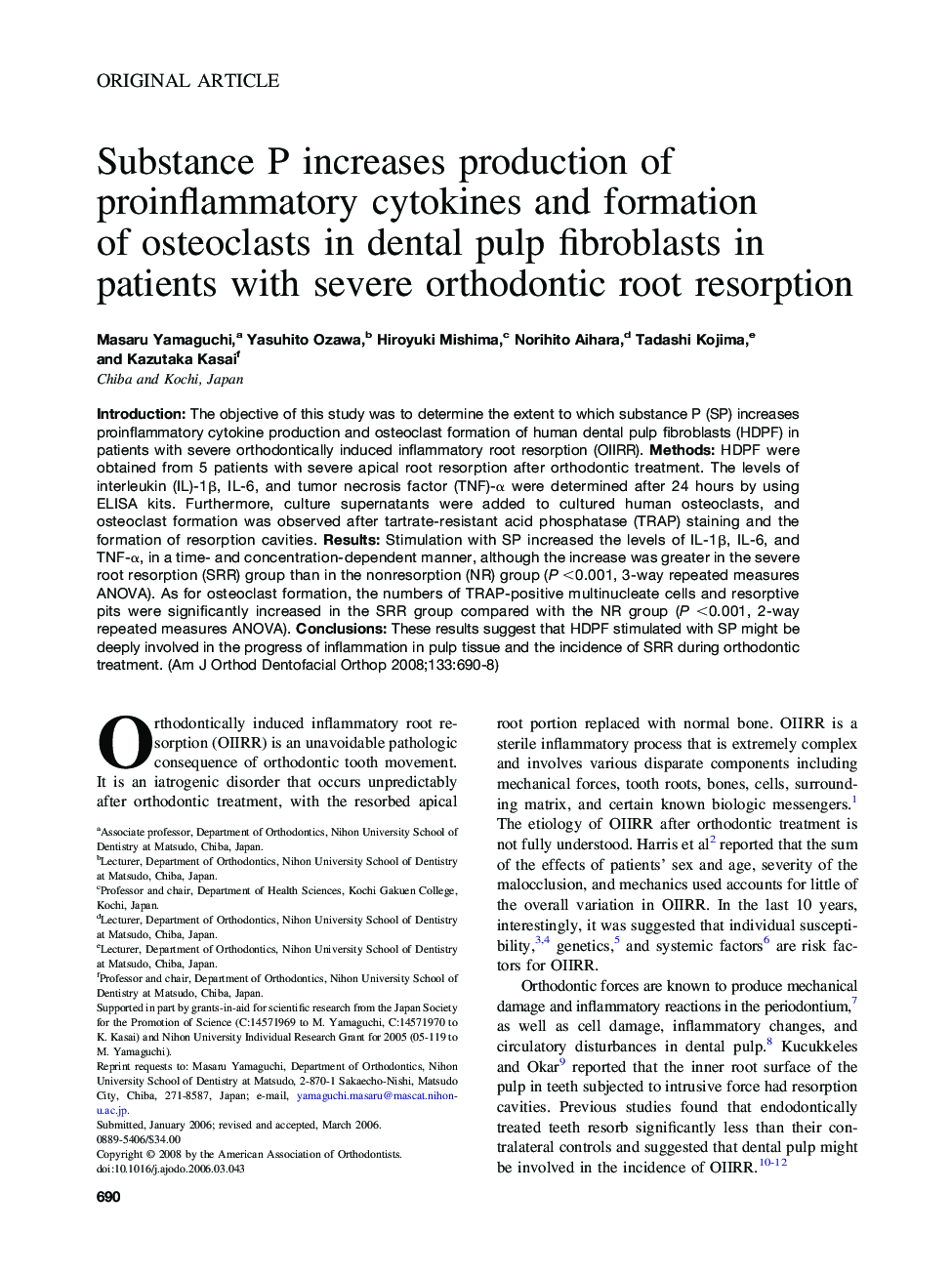| Article ID | Journal | Published Year | Pages | File Type |
|---|---|---|---|---|
| 3120237 | American Journal of Orthodontics and Dentofacial Orthopedics | 2008 | 9 Pages |
Introduction: The objective of this study was to determine the extent to which substance P (SP) increases proinflammatory cytokine production and osteoclast formation of human dental pulp fibroblasts (HDPF) in patients with severe orthodontically induced inflammatory root resorption (OIIRR). Methods: HDPF were obtained from 5 patients with severe apical root resorption after orthodontic treatment. The levels of interleukin (IL)-1β, IL-6, and tumor necrosis factor (TNF)-α were determined after 24 hours by using ELISA kits. Furthermore, culture supernatants were added to cultured human osteoclasts, and osteoclast formation was observed after tartrate-resistant acid phosphatase (TRAP) staining and the formation of resorption cavities. Results: Stimulation with SP increased the levels of IL-1β, IL-6, and TNF-α, in a time- and concentration-dependent manner, although the increase was greater in the severe root resorption (SRR) group than in the nonresorption (NR) group (P <0.001, 3-way repeated measures ANOVA). As for osteoclast formation, the numbers of TRAP-positive multinucleate cells and resorptive pits were significantly increased in the SRR group compared with the NR group (P <0.001, 2-way repeated measures ANOVA). Conclusions: These results suggest that HDPF stimulated with SP might be deeply involved in the progress of inflammation in pulp tissue and the incidence of SRR during orthodontic treatment.
